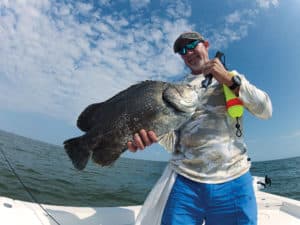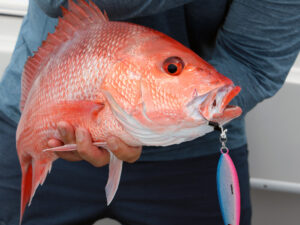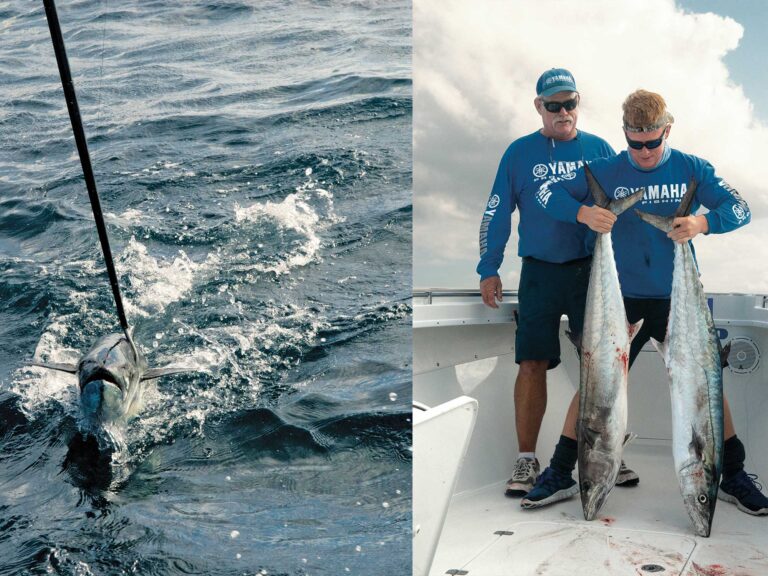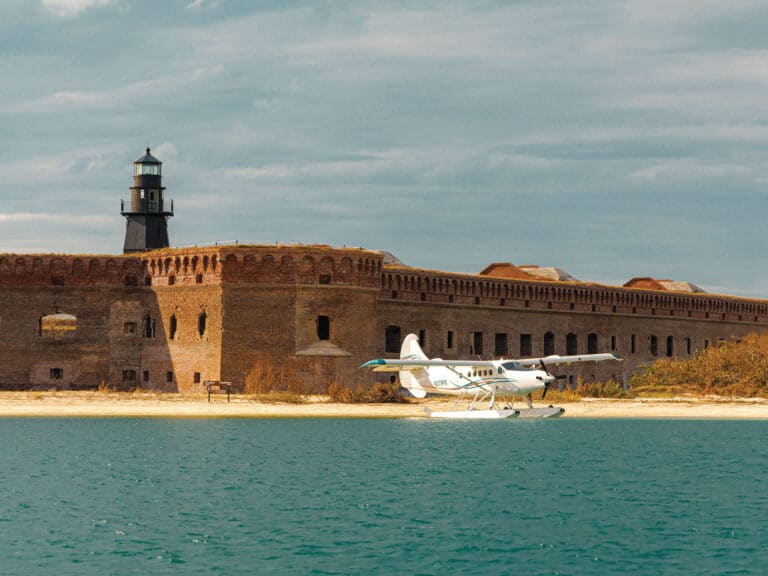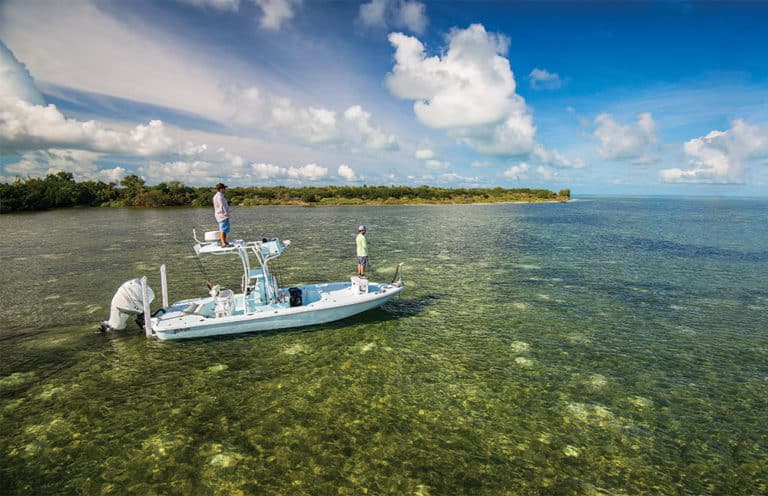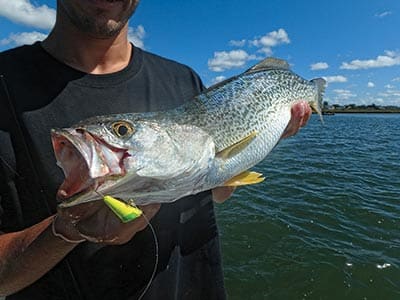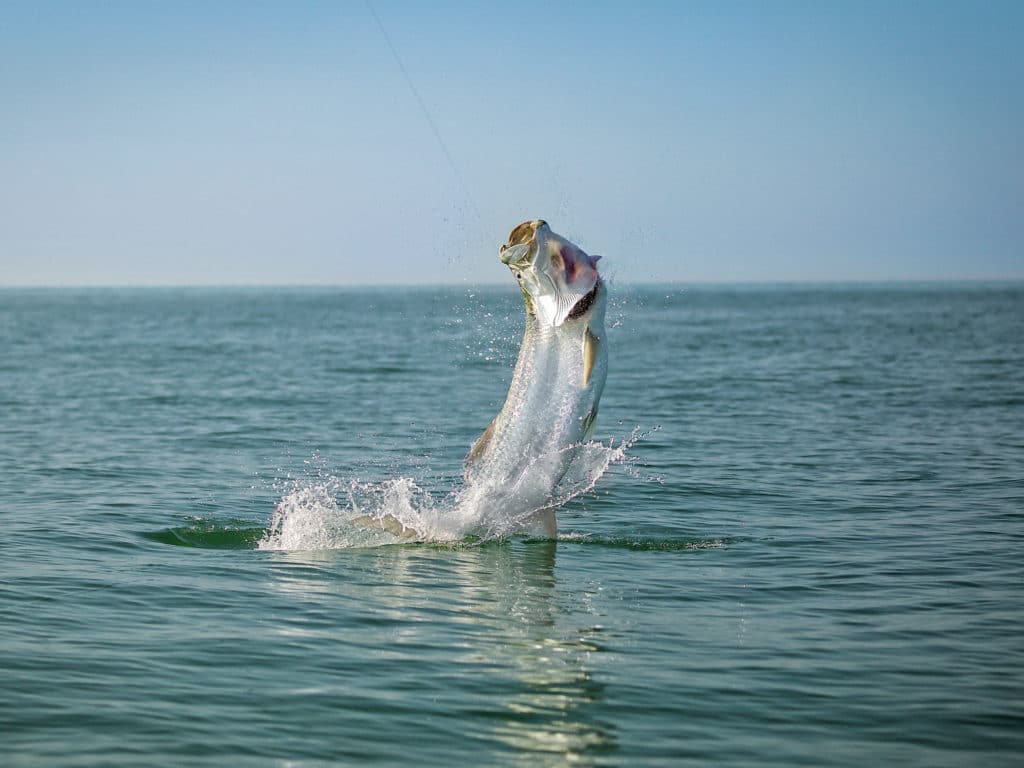
I started fishing for Atlantic tarpon on Virginia’s Eastern Shore in the early ’80s with my dad and Barry Truitt, local director of the Nature Conservancy. Each summer, we spent a week in a cabin on the salt marsh, swatting flies, roasting in the sun, and horsing in big stingrays and sharks. We saw plenty of tarpon roll but never actually got one to bite.
Fast forward 30 years. After catching everything that swims in Virginia’s waters, I again turned my attention to the silver king. With the help of local guide Capt. Blake Hayden, I spent two summers exploring the marshes and mud flats looking for Atlantic tarpon. And on a still summer day, no different than a million others I spent in the tidal marshes, we finally got our bite. The fish exploded on the flat line, launched itself into the air and greyhounded toward the oyster reef before we could get off the anchor. But the fishing gods smiled on us, and we eventually chased and released the tail-walking fish for our first tarpon catch.
Virginia Intel
In hopes of improving my odds, I tracked down local tarpon experts for advice. I started with Truitt, who caught his first tarpon in the early ’70s and, in 1975, set the Virginia state record with a 130-pound fish, which still stands. Over a biscuit and coffee at a local diner, he told me, “The first Virginia tarpon was caught in 1936 by an angler fishing for big red drum. Then in 1955, Virginia’s saltwater tournament director, Claude Rogers, successfully targeted tarpon on the Eastern Shore.”
After the history lesson, Truitt confirmed that tarpon season in the mid-Atlantic starts in late June and runs through the beginning of September. “The best is during the hottest days of August, and the Eastern Shore, covering 25 miles of marsh, and mud flats intersected by deep channels are prime tarpon grounds.” He added that he has spotted tarpon from Hog Island Bay south to Fisherman Island, and he fishes the inlets and deep holes on the ocean side of the islands. “Look for a large mud flat that drains into a deep channel,” Truitt said.
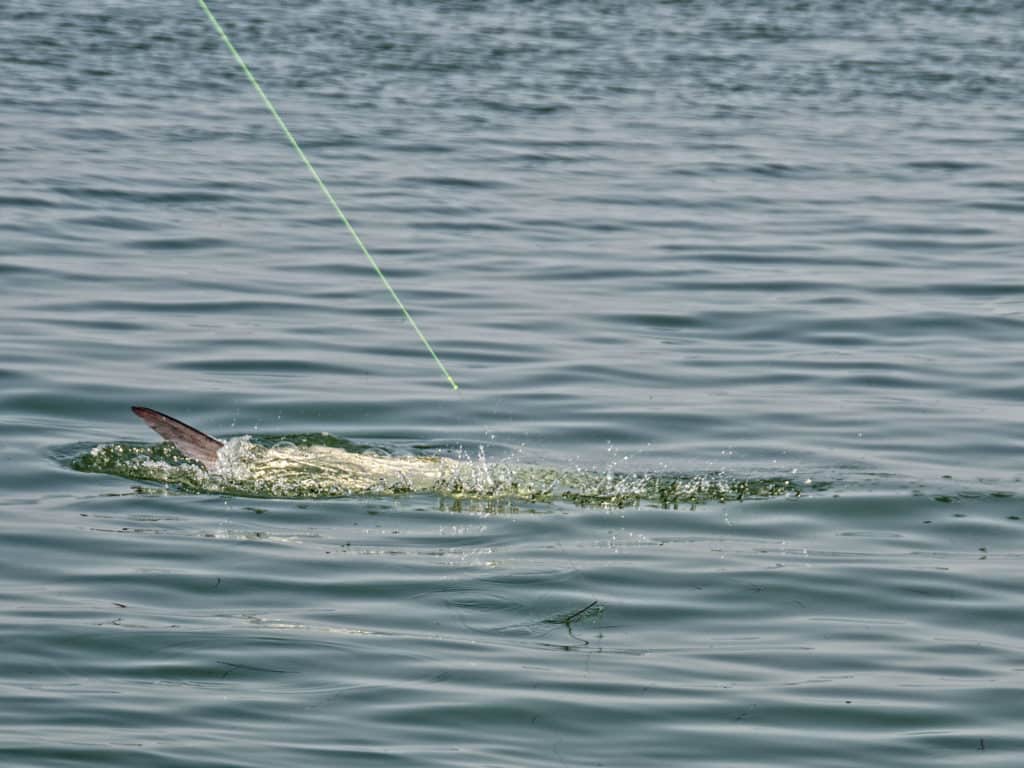
A Legend’s Advice
My next stop was local guide and legendary tarpon angler Capt. Jack Brady. At 83 years old, he has almost 50 years of Atlantic tarpon fishing experience and still fishes hard for them all summer. Like Truitt, Brady assured me that the key to catching tarpon is time on the water and stressed the importance of finding fish that aren’t pressured. “Once someone sees me fishing a spot, there will be a dozen boats there by the next weekend.” That’s when he moves on. He spends the summer searching for virgin tarpon waters. “Drive around long enough and you’ll see the fish rolling,” he promised. “I found a spot last summer that put up a tarpon eight days straight.”
Recommended Setup for Mid-Atlantic Tarpon
Once tarpon are located, Brady claims the fishing is simple. You just anchor up and soak chunks of cut bait or liveys on a fish-finder rig. He suggests using 30-pound tackle and spooling the reel with 20-pound monofilament. Add 20 feet of 50-pound-test, slide a fish-finder clip over the shock leader and tie on a 250-pound barrel swivel. Then attach a 6-foot section of 100-pound mono leader snelled to an 8/0 circle hook.
Truitt was adamant about limiting the spread to two or three baits, and Brady agrees. “Sharks and rays make it difficult to fish more lines than that,” he explains. “But keep a fourth rod rigged and ready to deploy quickly after a trash fish encounter.”
Fresh bait is key. Cut spot, croaker, mullet or menhaden catch the lion’s share of tarpon. Live bait works too, and many times you can catch some right at the tarpon hole with a two-hook bottom rig baited with bloodworm. Plan to start the day with 15 pounds of freshly caught bait, then supplement with bait caught on scene. “Find the fish, then sit and wait,” Brady assures me. “They’ll bite eventually.”
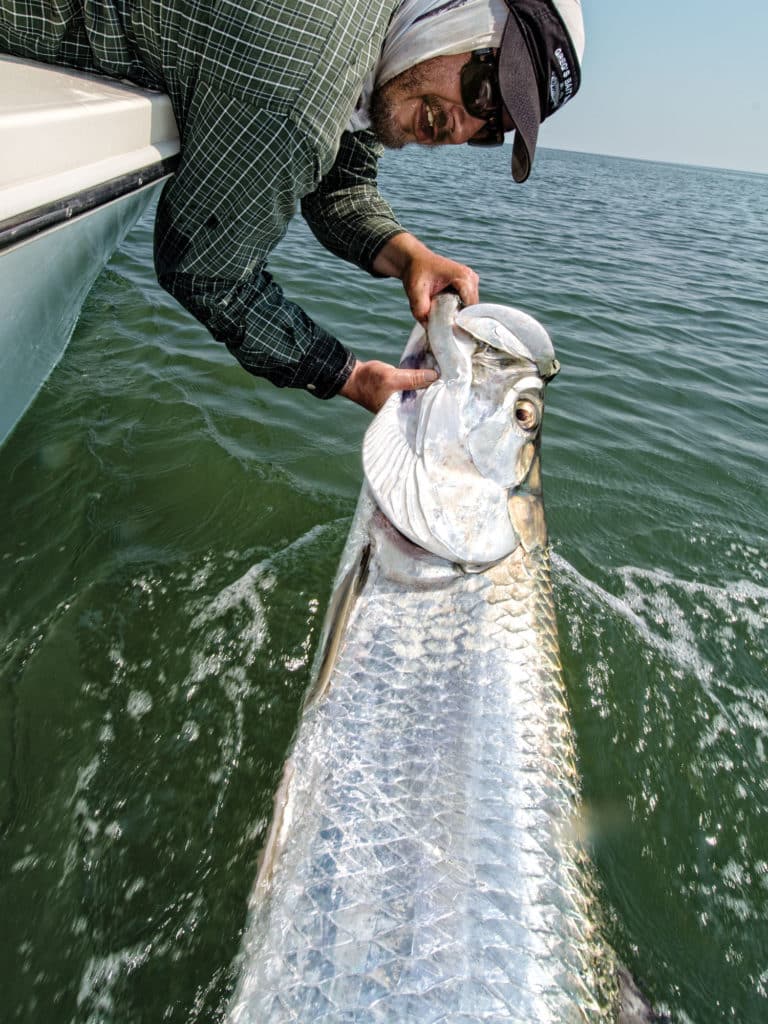
Tarheel Silver
Frustrated with chasing silver kings in Virginia waters, I decided to try them in Pamlico Sound, North Carolina, where the first tarpon catch was recorded by Capt. Rick Caton in 1975. I tracked Caton down for his story: “I was working on a shrimp trawler and kept seeing tarpon roll as we culled the catch,” he explained. After experimenting with tackle and rigs, Caton finally scored a tarpon and kicked off the Pamlico tarpon fishery that eventually had him running tarpon charters all summer and even spawned a fleet of guides and a huge tarpon tournament.
I then hooked up with local guide Capt. George Beckwith, one of Caton’s first prodigies. “I had a faster boat,” he laughs, “so Rick would send me all over the place looking for tarpon.” Beckwith has had better luck with the fish on Pamlico Sound and Neuse River, and I was anxious to learn his techniques.
Tarpon fishing in Pamlico is different than in the backwaters of Virgina’s Eastern Shore. Fresh bait is still key, and the same tackle and fish-finder rig get the nod. But, unlike the winding creeks and cuts of the Eastern Shore marsh, Pamlico Sound is wide-open water punctuated with sandbars and oyster rocks.
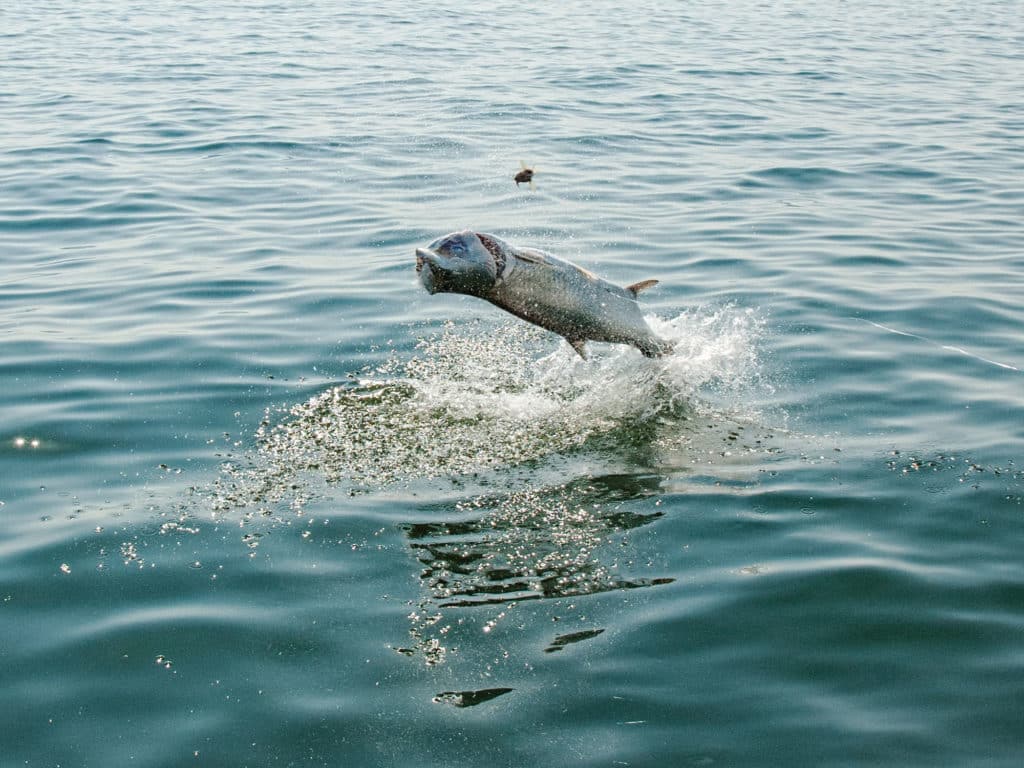
Carolina Strategy
Beckwith starts the day running from Oriental to the mouth of the Neuse River, then he explores the Bay, Pungo and Pamlico rivers, looking for rolling fish. Riding atop his sight-fishing tower, he pulls up to a submerged oyster rock or sandbar and waits for the fish to roll.
Once we spotted a pod of tarpon rolling, Beckwith positioned the boat to intercept the fish, dropped the anchor, and deployed baits and chum.
He uses eight rods baited with cut spot, croaker and mullet. Then he chucks out chunks of bait to lure the fish to the boat. Of course, this lures squadrons of stingrays and bait stealers too, so he constantly moves from rod to rod, checking the rigs and changing baits. When a stingray hits, he immediately launches a replacement bait. On a typical trip, he slogs through 50 pounds of bait.
Even at its best, tarpon fishing the Pamlico remains challenging. Beckwith expects half a dozen bites on a good day, but it took that many trips before I struck silver. On a blistering day in mid-August, one of the rods went down hard and up jumped a huge tarpon. The fish pulled every dirty trick it knew, running, charging, jumping and diving. I had never seen any fish fight as hard, but we still won the battle.
“Catching a tarpon north of the 35th parallel is a real accomplishment,” Beckwith explains. In fact, anglers travel from around the world to the tiny town of Oriental for a shot at these fish. The old-timers assure me it takes persistence to find success. You’ve got to enjoy the hunt, take in the scenery and appreciate the significance of the undertaking, they say. Just before parting, Caton finally spilled the secret to catching tarpon: “You have to have your mind right,” he whispered.
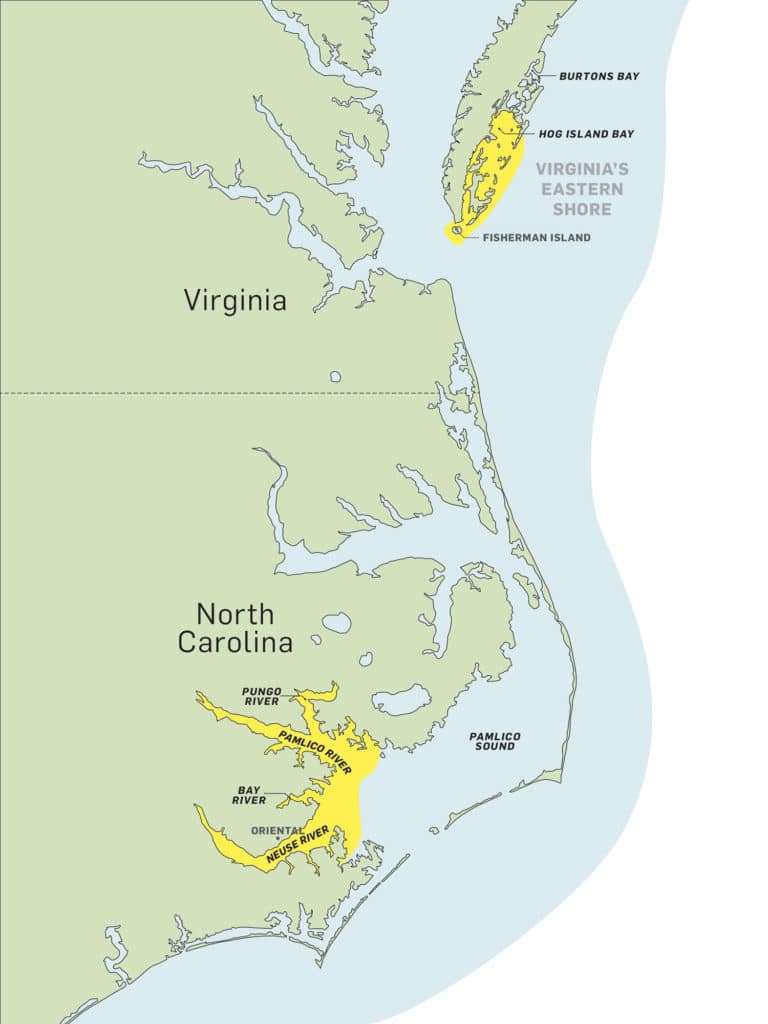
SWS Planner:
What: Tarpon in backwater marshes and open bays
When: Mid- to late summer
Where: Virginia’s Eastern Shore and southern Pamlico Sound, North Carolina
Who: Stubborn trophy hunters aboard shallow-draft skiffs for the Virginia marsh or midsize center consoles for the open Pamlico Sound. The following charter captains specialize in fishing for tarpon:
Virginia
Capt. Jack Brady
757-331-2111
540-860-2986
North Carolina
Capt. George Beckwith
252-671-3474
pamlicoguide.com
Capt. Rick Caton
252-216-6765
customsoundcharters.com
SWS Tackle Box:
Rods: 7-foot medium-heavy casting or spinning
Reels: High-speed reels with capacity for at least 250 yards of line, matched to rod
Line: 20-pound mono with 20 feet of 50-pound mono top shot and 4 feet of 80- to 100-pound mono leader
Rig: Fish-finder rig with a 2- to 6-ounce bank sinker on the top shot, above a swivel
Bait: Cut croaker, spot, menhaden or mullet
Hooks: 8/0 circle



